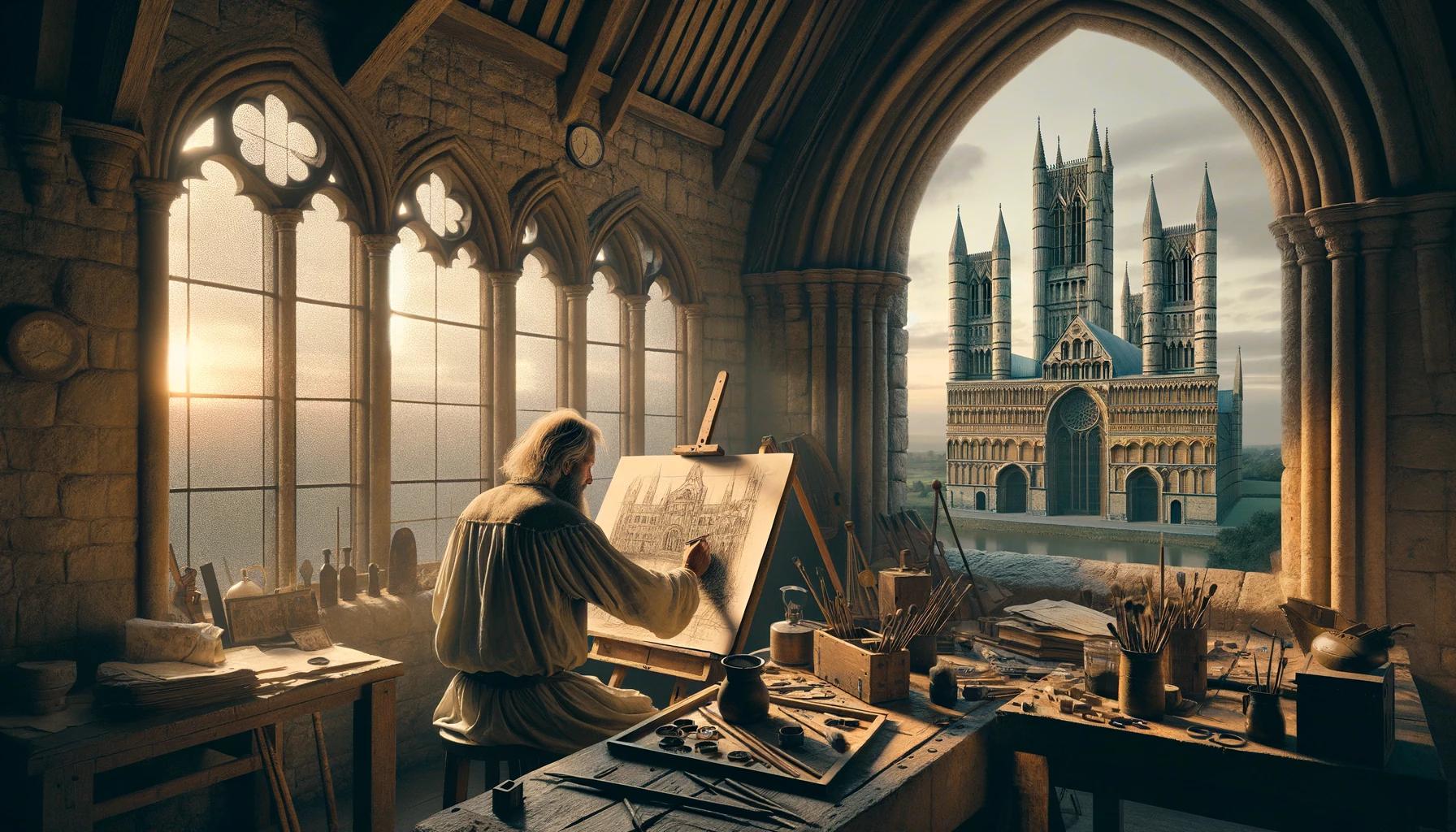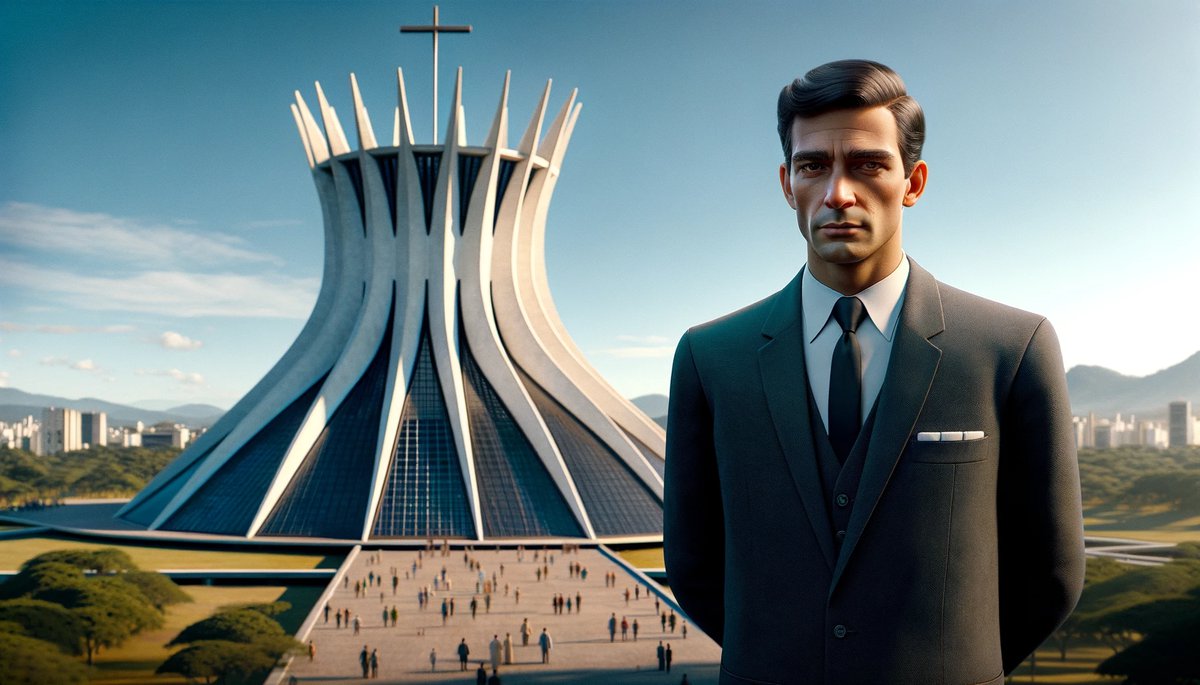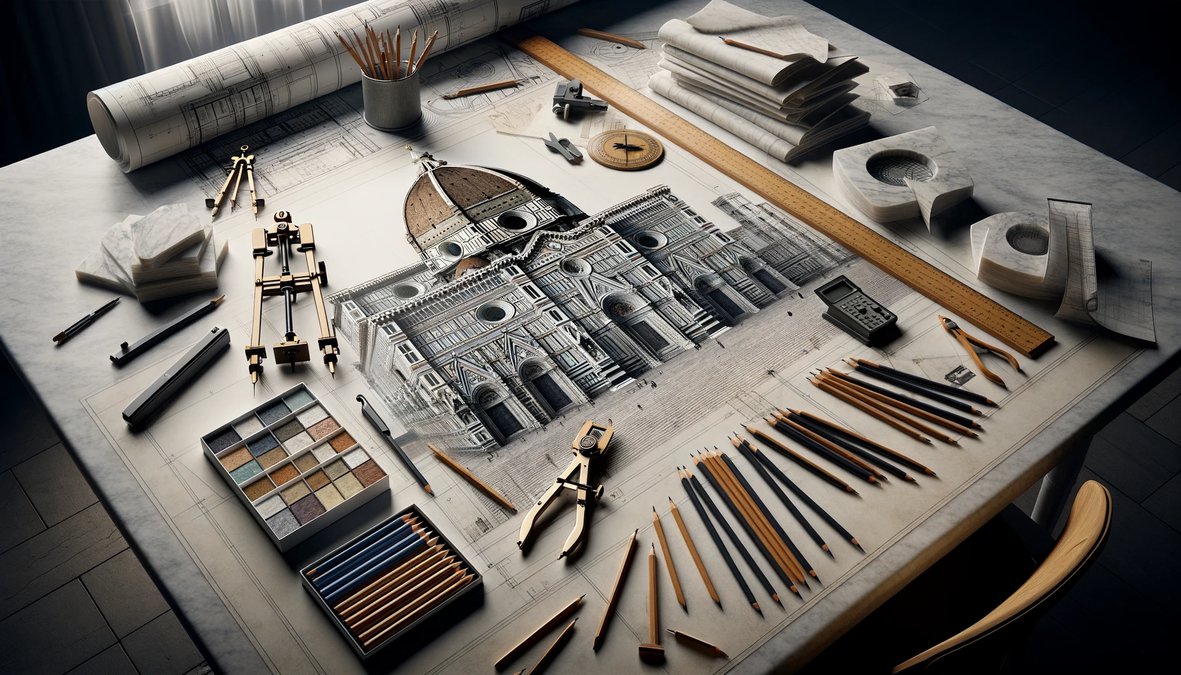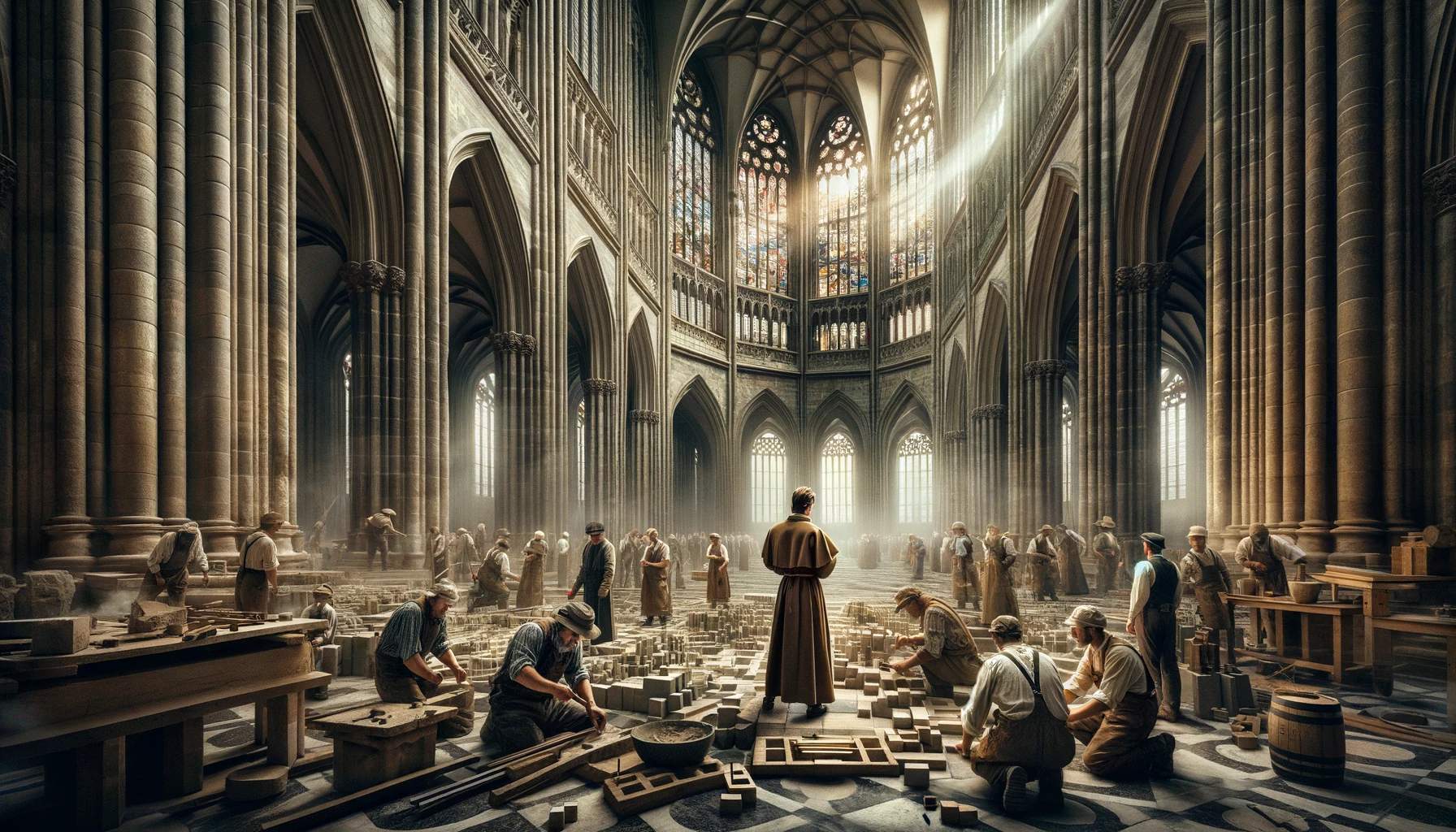Home>Arts and Culture>Who Built The Dome Of The Florence Cathedral


Arts and Culture
Who Built The Dome Of The Florence Cathedral
Published: February 17, 2024
Peter Smith, Editorial Director at Christian.net, combines deep insights into faith, politics, and culture to lead content creation that resonates widely. Awarded for his contributions to religious discourse, he previously headed a major organization for religious communicators, enhancing dialogue on faith's societal impacts.
Discover the masterminds behind the iconic Dome of the Florence Cathedral and their lasting impact on arts and culture. Uncover the fascinating history of this architectural marvel.
(Many of the links in this article redirect to a specific reviewed product. Your purchase of these products through affiliate links helps to generate commission for Christian.net, at no extra cost. Learn more)
Table of Contents
Introduction
The Florence Cathedral, also known as the Cattedrale di Santa Maria del Fiore, is a breathtaking architectural marvel that has captivated the world for centuries. At the heart of this magnificent structure lies the iconic dome, a testament to the ingenuity and craftsmanship of the Renaissance era. The construction of the dome, which began in 1420, posed a monumental challenge to the architects and builders of the time. Its completion marked a historic achievement in engineering and design, setting new standards for dome construction that would influence architectural practices for generations to come.
The story of the Florence Cathedral's dome is one of ambition, innovation, and unwavering determination. It represents a pivotal moment in the history of architecture, showcasing the remarkable capabilities of human creativity and engineering prowess. As we delve into the intricate details of the dome's creation, we will uncover the visionary minds and skilled hands that brought this architectural wonder to life.
Join me on a journey through time as we unravel the mysteries and triumphs surrounding the construction of the Florence Cathedral's dome. From the initial design concepts to the groundbreaking techniques employed during its construction, we will explore the fascinating narrative of how this awe-inspiring structure came into being. Let's embark on an exploration of art, history, and engineering as we uncover the captivating tale of who built the dome of the Florence Cathedral.
Read more: Who Painted Florence Cathedral Dome
The Design and Construction of the Florence Cathedral
The construction of the Florence Cathedral, or Cattedrale di Santa Maria del Fiore, commenced in 1296, with the aim of creating a grand structure that would symbolize the wealth and power of Florence. The cathedral's original architect, Arnolfo di Cambio, envisioned a magnificent edifice that would surpass all existing churches in magnificence. However, it wasn't until the early 15th century that the focus shifted to the construction of the dome, a task that presented unprecedented challenges.
The initial design of the cathedral's dome posed a significant dilemma. Traditional methods of constructing domes relied on wooden centering to support the structure during construction, but the sheer size of the Florence Cathedral's dome rendered this approach impractical. The need for a self-supporting structure led to a prolonged period of uncertainty and debate among architects and engineers.
Amidst this uncertainty, a competition was announced in 1418 to select the architect who would oversee the construction of the dome. The competitors were tasked with presenting their solutions to the daunting challenge of constructing the dome without the use of wooden centering. This pivotal moment in the cathedral's history attracted the attention of esteemed architects and thinkers from across Italy.
The competition ultimately led to the selection of Filippo Brunelleschi, a visionary architect and engineer whose innovative ideas would revolutionize dome construction. Brunelleschi's design incorporated a double-shelled dome, with an inner and outer layer connected by a series of horizontal and vertical ribs. This groundbreaking approach not only provided the necessary support during construction but also ensured the structural integrity and stability of the dome for centuries to come.
The construction of the dome commenced in 1420, marking the beginning of a monumental engineering feat that would test the limits of Renaissance technology. The meticulous planning and execution of Brunelleschi's design required the expertise of skilled craftsmen and laborers, who worked tirelessly to bring his visionary concept to fruition.
As the dome gradually rose above the Florence skyline, it became a symbol of human achievement and perseverance. The completion of the dome in 1434 marked a historic triumph, solidifying the Florence Cathedral as a crowning jewel of Renaissance architecture and a testament to the unwavering determination of the individuals who dedicated themselves to its construction.
The design and construction of the Florence Cathedral's dome stand as a testament to the power of human ingenuity and the enduring legacy of architectural innovation. It represents a pivotal moment in the history of engineering and design, showcasing the remarkable capabilities of the human spirit when faced with seemingly insurmountable challenges.
The Role of Filippo Brunelleschi
Filippo Brunelleschi, a visionary architect and engineer, played a pivotal role in the construction of the Florence Cathedral's dome, leaving an indelible mark on the history of architecture. Born in Florence in 1377, Brunelleschi's innovative ideas and unwavering determination would revolutionize dome construction and elevate him to legendary status in the annals of architectural achievement.
Brunelleschi's journey to becoming the mastermind behind the dome began with his insatiable curiosity and relentless pursuit of knowledge. His early studies of classical architecture and engineering principles laid the foundation for his groundbreaking approach to dome construction. His keen observations of ancient Roman structures, such as the Pantheon, provided him with invaluable insights into the structural mechanics of domes, inspiring him to develop innovative solutions to the challenges posed by the Florence Cathedral's ambitious design.
In 1418, Brunelleschi entered the pivotal competition to select the architect who would oversee the construction of the dome. His proposal, which featured a double-shelled dome with an inner and outer layer connected by a series of horizontal and vertical ribs, astounded the judges with its ingenuity and practicality. Brunelleschi's design not only addressed the technical complexities of constructing the dome without traditional centering but also demonstrated a deep understanding of structural stability and architectural aesthetics.
Upon winning the competition, Brunelleschi embarked on a journey that would test the limits of Renaissance engineering. His role extended far beyond that of a traditional architect, as he assumed the responsibilities of a visionary leader, a meticulous planner, and an innovative problem-solver. He assembled a team of skilled craftsmen and laborers, overseeing every aspect of the construction process with unwavering precision and attention to detail.
Brunelleschi's hands-on approach and inventive solutions were instrumental in overcoming the myriad challenges encountered during the dome's construction. His use of innovative construction techniques, such as the use of hoisting machines and oxen-driven cranes, showcased his ability to marry traditional craftsmanship with cutting-edge technology. His unwavering commitment to excellence and his relentless pursuit of perfection set new standards for architectural innovation, inspiring future generations of builders and designers.
The completion of the dome in 1434 marked the culmination of Brunelleschi's extraordinary vision and leadership. His role in the construction of the Florence Cathedral's dome solidified his legacy as a pioneering figure in the history of architecture, leaving an enduring imprint on the skyline of Florence and the hearts of admirers around the world. Brunelleschi's contributions continue to inspire architects and engineers, serving as a timeless reminder of the transformative power of human creativity and determination in the face of monumental challenges.
The Dome's Engineering and Innovation
The engineering and innovation behind the construction of the Florence Cathedral's dome represent a remarkable triumph of human ingenuity and technical prowess. At the heart of this extraordinary achievement lies the visionary approach of Filippo Brunelleschi, whose groundbreaking design and innovative construction techniques revolutionized the art of dome building.
Brunelleschi's design for the dome incorporated a double-shelled structure, featuring an inner and outer layer connected by a series of horizontal and vertical ribs. This ingenious configuration provided the necessary support during construction, eliminating the need for traditional wooden centering. The self-supporting nature of the dome's design not only defied contemporary architectural conventions but also showcased Brunelleschi's deep understanding of structural mechanics and engineering principles.
The construction of the dome presented unprecedented challenges, requiring a delicate balance of precision, craftsmanship, and inventive problem-solving. Brunelleschi's meticulous planning and execution were complemented by the use of innovative construction techniques, such as the implementation of hoisting machines and oxen-driven cranes. These advancements in construction technology enabled the efficient transport of materials and the elevation of heavy components to great heights, demonstrating Brunelleschi's ability to merge traditional craftsmanship with cutting-edge engineering solutions.
One of the most remarkable aspects of the dome's engineering was the use of herringbone brickwork in the dome's construction. This distinctive pattern of brick-laying, characterized by its alternating diagonal arrangement, provided exceptional strength and stability to the structure. The herringbone technique allowed the dome to withstand the forces exerted upon it, ensuring its longevity and structural integrity for centuries to come.
The innovative solutions employed in the construction of the dome set new standards for architectural engineering, inspiring future generations of builders and designers. Brunelleschi's unwavering commitment to excellence and his relentless pursuit of perfection propelled the Florence Cathedral's dome into the annals of architectural history as a testament to human creativity and determination.
The engineering and innovation behind the construction of the Florence Cathedral's dome stand as a testament to the transformative power of visionary thinking and technical expertise. The dome's enduring legacy continues to inspire awe and admiration, serving as a timeless symbol of human achievement and the boundless possibilities of architectural innovation.
The Legacy of the Florence Cathedral's Dome
The legacy of the Florence Cathedral's dome transcends its physical presence, echoing through the annals of architectural history as a testament to human ingenuity and artistic mastery. The completion of this awe-inspiring structure in 1434 marked a pivotal moment in the evolution of dome construction, leaving an indelible imprint on the skyline of Florence and the hearts of admirers around the world.
The dome's enduring legacy is rooted in its revolutionary engineering and innovative design, which defied contemporary architectural conventions and set new standards for structural integrity and stability. Filippo Brunelleschi's visionary approach to dome construction, characterized by a double-shelled design and the use of herringbone brickwork, continues to inspire architects and engineers, serving as a timeless reminder of the transformative power of human creativity and determination in the face of monumental challenges.
Beyond its technical achievements, the Florence Cathedral's dome stands as a symbol of artistic and cultural significance, embodying the spirit of the Renaissance era. Its majestic presence in the Florentine skyline reflects the city's rich heritage and enduring commitment to artistic excellence. The dome's harmonious integration with the cathedral's overall design exemplifies the seamless fusion of architectural grandeur and spiritual devotion, captivating visitors with its timeless beauty and profound symbolism.
The legacy of the Florence Cathedral's dome extends beyond its physical attributes, permeating the realms of art, literature, and popular culture. Its iconic silhouette has inspired countless artists, writers, and filmmakers, serving as a muse for creative expression and storytelling. The dome's influence can be felt in works of art, poetry, and cinematic masterpieces, where its majestic form evokes a sense of wonder and reverence.
Moreover, the Florence Cathedral's dome continues to attract millions of visitors from around the globe, offering a transcendent experience that transcends time and space. Its enduring allure draws pilgrims, scholars, and enthusiasts of art and architecture, inviting them to marvel at its magnificence and contemplate the legacy of human achievement encapsulated within its elegant curves and majestic proportions.
In essence, the legacy of the Florence Cathedral's dome is a testament to the enduring power of human creativity, innovation, and perseverance. Its impact reverberates through the ages, inspiring future generations to push the boundaries of architectural possibility and embrace the transformative potential of visionary thinking. As the sun sets over the rooftops of Florence, the silhouette of the dome stands as a timeless symbol of human aspiration and the boundless heights that can be reached through the marriage of art and engineering.















